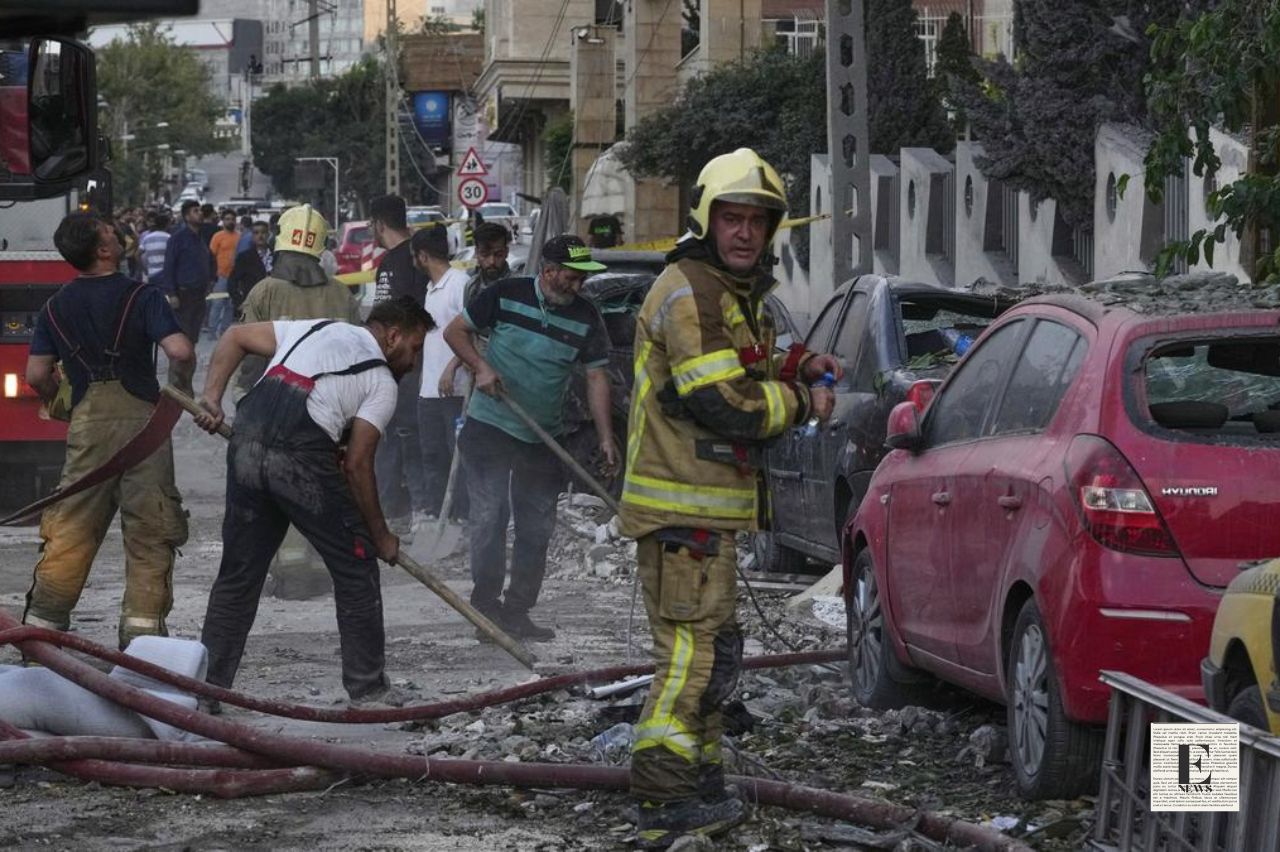BREAKING: Israel Launches Unprecedented Strike on Iranian Nuclear and Military Targets
Early on June 13, 2025, Israel launched “Operation Rising Lion”—a massive air campaign targeting Iran’s nuclear facilities, ballistic missile program, and top military leadership. Prime Minister Benjamin Netanyahu declared this a “decisive moment in Israel’s history,” stating the operation aims to “remove the existential threat” of Iran’s nuclear program and will continue “for as many days as necessary”.
Iran responded by firing over 100 drones toward Israeli territory, with the Israeli Defense Forces (IDF) confirming all aerial defense systems were activated to intercept the threats. Airspaces over Israel, Iran, Iraq, and Jordan were shut down, stranding thousands of travelers worldwide and forcing airlines like Air India to divert flights.

Decapitating Iran’s Military Command
The Israeli strikes delivered a catastrophic blow to Iran’s military leadership:
- Maj. Gen. Hossein Salami, Commander-in-Chief of the Islamic Revolutionary Guard Corps (IRGC), killed in a strike on IRGC headquarters.
- Maj. Gen. Mohammad Bagheri, Chief of Staff of Iran’s Armed Forces (second only to Supreme Leader Khamenei), assassinated.
- Gen. Gholamali Rashid (Khatam ol Anbia Central Headquarters) and former security chief Ali Shamkhani also killed.
These losses cripple Iran’s command structure. Supreme Leader Ayatollah Khamenei immediately appointed replacements—Habibollah Sayyari as armed forces chief and Ahmad Vahidi as IRGC commander—and vowed “severe punishment” against Israel.
Targeting Iran’s Nuclear Program: The Natanz Attack
Israel focused heavily on disabling Iran’s nuclear capabilities:
- Natanz Uranium Enrichment Facility struck, with footage showing black smoke billowing from the site.
- Nuclear scientists Fereydoon Abbasi (ex-head of Atomic Energy Organization) and Mohammad Mehdi Tehranchi (physicist) assassinated.
- The IAEA confirmed monitoring radiation levels at Natanz but reported no immediate spikes.
An Israeli military official stated intelligence showed Iran was “approaching the point of no return” for a nuclear weapon, with enough enriched uranium for “15 bombs within days”.
Iran’s Retaliation: Drones, Threats, and Regional Escalation
Iran’s initial retaliation included:
- Launching 100+ drones toward Israel, expected to take hours to reach Israeli airspace.
- Vowing a “strong response” through the UN Charter’s Article 51 (self-defense clause).
- Accusing the U.S. of complicity, despite American denials .
Israel declared a state of emergency, closing schools, banning public gatherings, and mobilizing tens of thousands of troops. Hospitals shifted to emergency footing, and civilians were ordered near bomb shelters.
Global Reactions: Condemnation, Alarm, and Calls for Restraint
United States:
- Secretary of State Marco Rubio stressed the U.S. was “not involved” but warned Iran: “Do not target U.S. interests or personnel”.
- President Trump hoped to “get back to the negotiating table,” acknowledging Iran “cannot have a nuclear bomb”.
Saudi Arabia:
- Condemned Israel’s “blatant aggression” as a violation of international law.
UN and Allies:
- UN Secretary-General António Guterres urged maximum restraint.
- Japan “strongly condemned” the escalation, while Australia and New Zealand expressed alarm.
Oman criticized Israel’s “dangerous approach,” jeopardizing planned U.S.-Iran nuclear talks in Muscat.

Economic Fallout: Oil Prices Surge, Markets Plunge
The attack triggered immediate financial turbulence:
- Brent crude oil surged 9% to $78.50/barrel—the highest since January 2025.
- U.S. stock futures plummeted, with the Dow down over 500 points.
- Iran’s Oil Ministry confirmed refineries and depots were unharmed, but fears of Strait of Hormuz disruptions persist.
Also Read : Seven dead while Colombia was hit by a wave of bombings and gunshot
Why Now? The Intelligence and Geopolitical Calculus
Israel cited three urgent reasons for the strike:
- Nuclear Tipping Point: Iran accelerated uranium enrichment in “decentralized, fortified underground facilities”.
- Diplomatic Sabotage? Senator Chris Murphy (D-CT) accused Israel of trying to “scuttle” U.S.-Iran talks set for June.
- Preemptive Strategy: The IDF called this a “preventive operation” against an “imminent existential threat”.
Notably, the U.S. intelligence community disagreed with Israel’s assessment, maintaining Iran had not restarted its weapons program.
What Comes Next: Regional War or Forced Diplomacy?
Short-Term:
- Iran’s drone attack is likely only its first response. Past behavior (e.g., retaliation for Qassem Soleimani’s killing) suggests further strikes could follow in days.
- Hezbollah and Iraqi militias may activate against Israel/U.S. targets.
Long-Term Implications:
- Nuclear Proliferation: Iran could withdraw from the Non-Proliferation Treaty and openly pursue bombs.
- U.S.-Israel Rift: Netanyahu defied U.S. pleas for restraint, testing the alliance.
- Arab-Israel Relations: Saudi-Israel normalization talks are likely frozen.
Travel Chaos: Flight Diversions and Advisories
Global aviation reeled from airspace closures:
- Air India diverted 12+ flights, including London-Mumbai (to Vienna) and New York-Delhi (to Sharjah).
- The U.S. Embassy in Jerusalem ordered staff to “shelter in place”.
- India advised citizens in Iran to “avoid unnecessary movement”.
Key Questions Unanswered
- How Set Back Is Iran’s Nuclear Program?
Natanz was hit, but Fordow (a deeper underground site) remains intact. Past attacks (like Stuxnet) caused only 1-2 year delays. - Will U.S.-Iran Talks Proceed?
Envoy Steve Witkoff still plans to meet Iranian officials in Oman on June 15—if Iran attends. - Can Israel Withstand Retaliation?
The IDF’s multi-layered air defense (Arrow, David’s Sling, Iron Dome) faces its largest test yet


